The strangest black holes in the universe
Black holes are gigantic cosmic monsters, exotic objects whose gravity is so strong that not even light can escape their clutches.
Black holes come in a wide variety of forms, from small stellar-mass bodies to the supermassive beasts that reside at the hearts of galaxies. Here are 10 of the most extreme black holes, from the smallest to the largest and from cannibals to rogues.
The biggest black holes
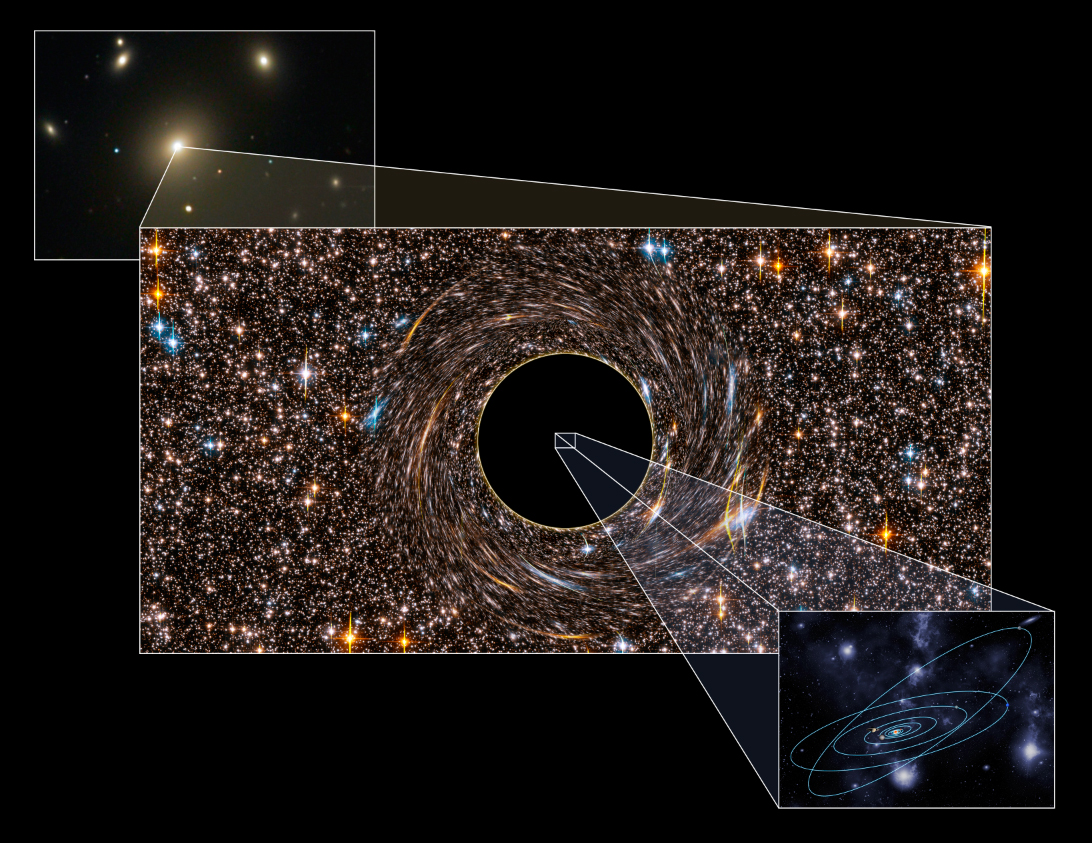
Nearly all galaxies are thought to harbor at their cores supermassive black holes millions to billions of times the mass of Earth's sun. In 2011, scientists discovered the largest black holes known in two nearby galaxies.
One of these galaxies, known as NGC 3842 — the brightest galaxy in the Leo cluster nearly 320 million light years away — has a central black hole containing 9.7 billion solar masses. The other, NGC 4889, the brightest galaxy in the Coma cluster more than 335 million light years away, has a black hole of comparable or larger mass.
The gravitational range, or "event horizon," of these black holes is about five times the distance from the sun to Pluto. For comparison, these black holes are 2,500 times as massive as the black hole at the center of the Milky Way galaxy, whose event horizon is one-fifth the orbit of Mercury.
The smallest black hole
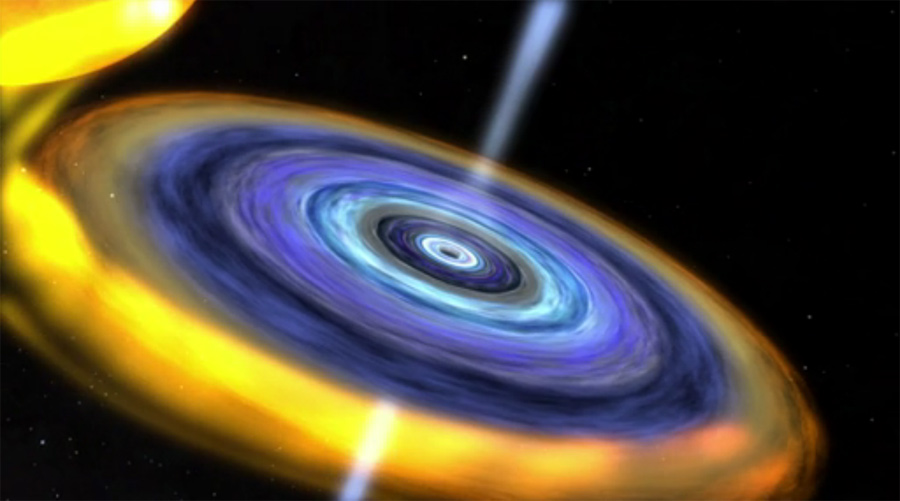
The smallest black hole discovered to date may be less than three times the mass of our sun. This would put this little monster, officially called IGR J17091-3624, near the theoretical minimum limit needed for a black hole to be stable. As tiny as this black hole may be, it looks fierce, capable of 20 million mph winds (32 million kph) — the fastest yet observed from a stellar-mass black hole by nearly 10 times.
Cannibalistic black holes
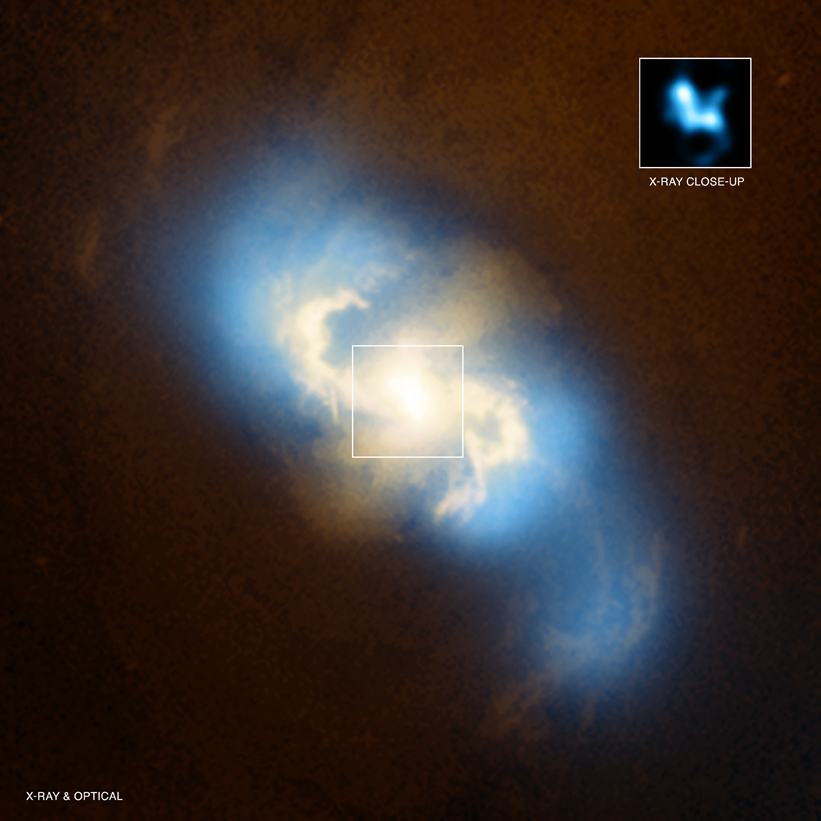
Black holes devour anything unlucky enough to drift too close, including other black holes. Scientists recently detected the monstrous black hole at the heart of one galaxy getting consumed by a still larger black hole in another.
The discovery is the first of its kind. Astronomers had witnessed the final stages of the merging of galaxies of equal mass — so-called major mergers — but minor mergers between galaxies and smaller companions had long eluded researchers.
Using NASA's Chandra X-ray Observatory, investigators detected two black holes at the center of a galaxy dubbed NGC3393, with one black hole about 30 million times the mass of the sun and the other at least 1 million times the mass of the sun, separated from each other by only about 490 light-years.
Bullet-shooting black hole
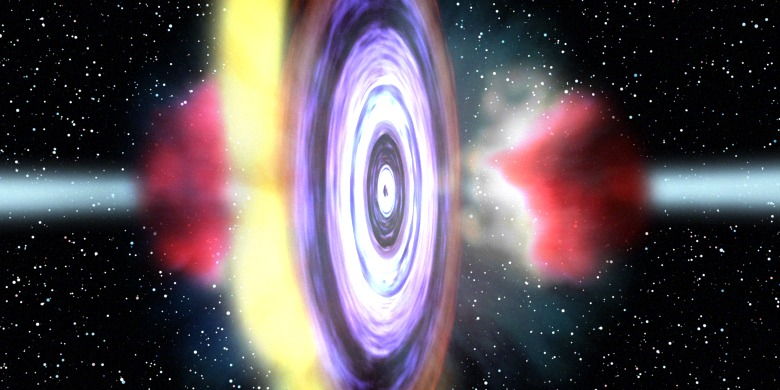
Black holes are known for sucking in matter, but researchers find they can shoot it out as well. Observations of a black hole called H1743-322, which harbors five to 10 times the mass of the sun and is located about 28,000 light-years from Earth, revealed it apparently pulled matter off a companion star, then spat some of it back out as gigantic "bullets" of gas moving at nearly a quarter the speed of light.
The oldest known black hole
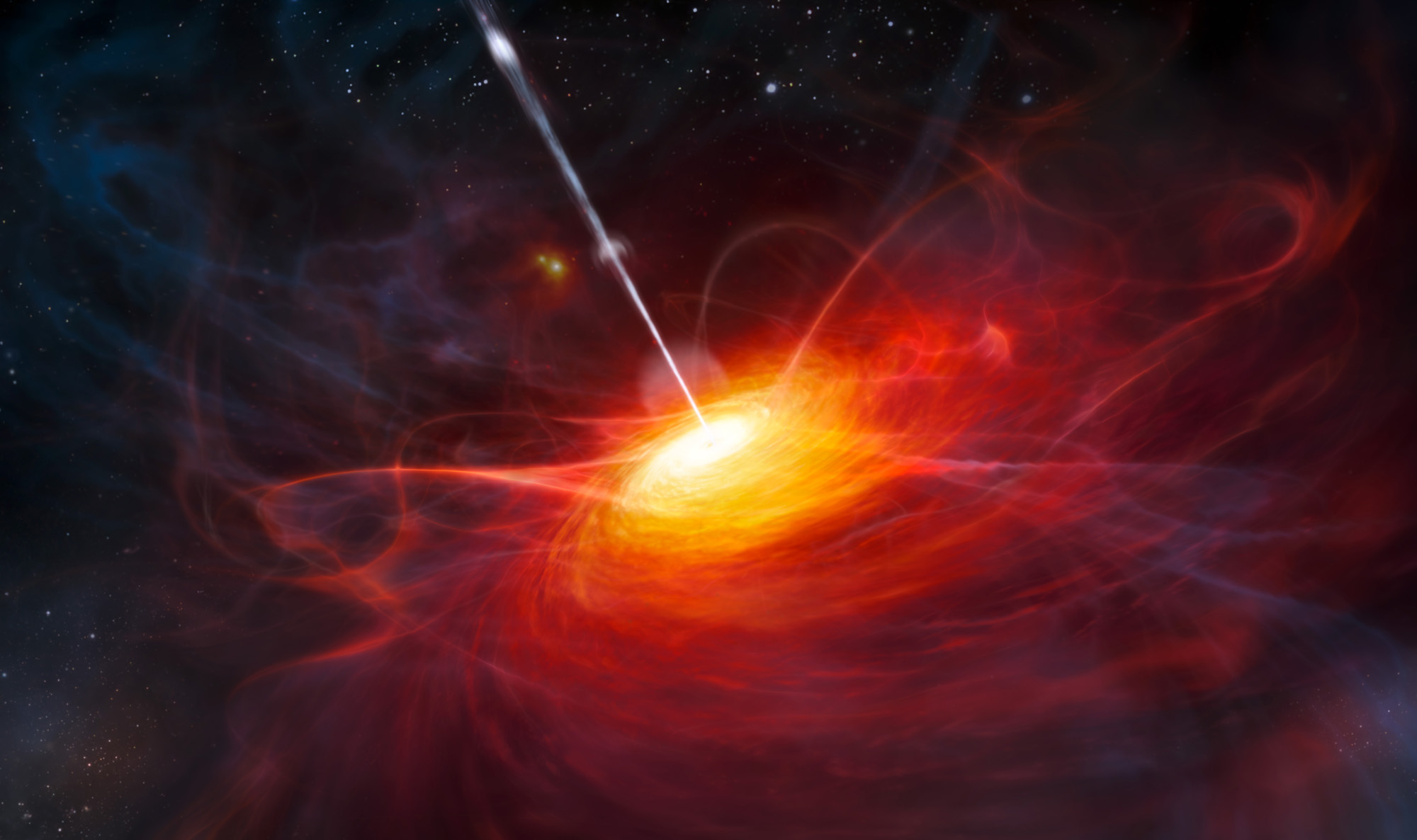
The oldest black hole found yet, officially known as ULAS J1342+0928, was born about 690 million years after the Big Bang that created our universe. (Scientists think the Big Bang occurred about 13.7 billion years ago.)
The ancient age of this black hole actually poses some problems for astronomers. This brilliant enigma appears to be 1 billion times the mass of the sun. How black holes became so massive so soon after the Big Bang is difficult to explain.
The brightest black hole
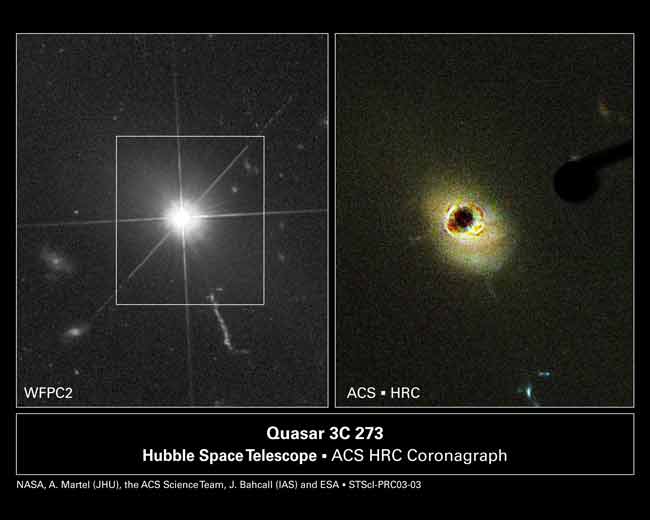
Although the gravitational pulls of black holes are so strong that even light cannot escape, they also make up the heart of quasars, the most luminous, most powerful and most energetic objects in the universe.
As supermassive black holes at the centers of galaxies suck in surrounding gas and dust, they can spew out huge amounts of energy. The brightest quasar identified to date is J043947.08+163415.7, which lies about 12.8 billion light-years away from Earth.
Rogue black holes
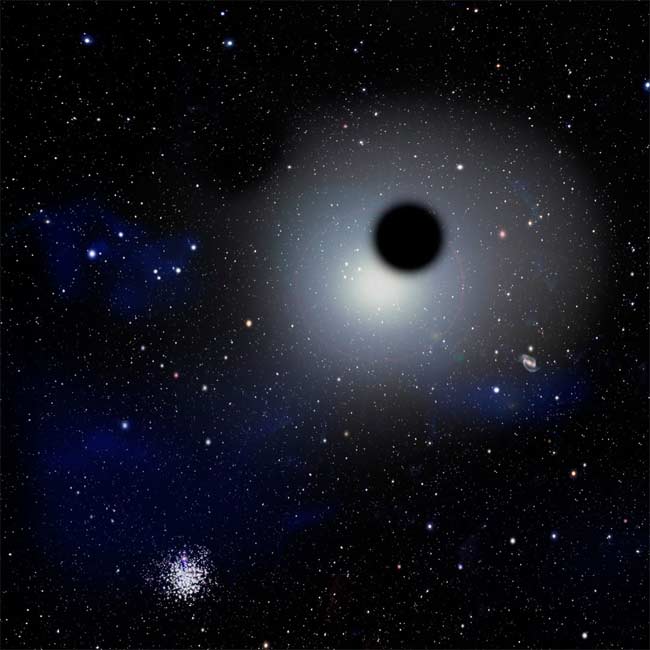
When galaxies collide, black holes can get kicked away from the site of the crash to roam freely through space. The first known such rogue black hole, SDSSJ0927+2943, may be approximately 600 million times the mass of the sun and hurtle through space at a whopping 5.9 million mph (9.5 million kph). Hundreds of rogue black holes might wander through the Milky Way.
Middleweight black holes
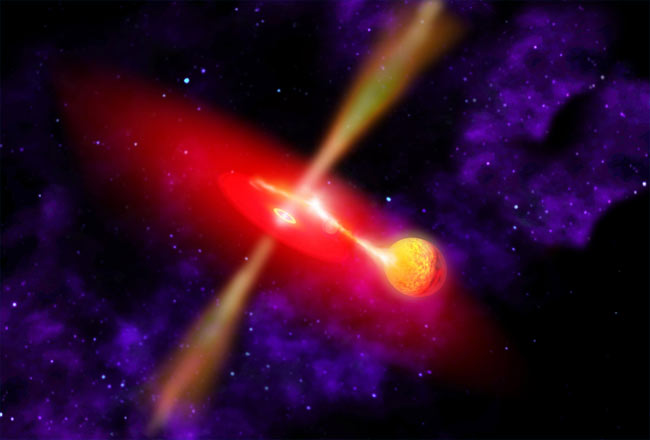
Scientists have long thought that black holes come in three sizes — essentially small, medium and large. Relatively small black holes holding the mass of a few suns are common, while supermassive black holes millions to billions of solar masses are thought to lurk at the heart of nearly every galaxy. One more massive than four million suns, for example, is thought to hide in the center of the Milky Way.
However, middle-weight black holes had eluded astronomers for years, until 2009. That's when scientists discovered one of the first intermediate-mass black holes, called HLX-1 (Hyper-Luminous X-ray source 1), approximately 290 million light-years from Earth. The mysterious object appears to be about 20,000 solar masses in size.
Medium-size black holes are thought to be the building blocks of supermassive black holes, so understanding more about them can shed light on how these monsters and the galaxies that surround them evolved.
Fastest-spinning black hole
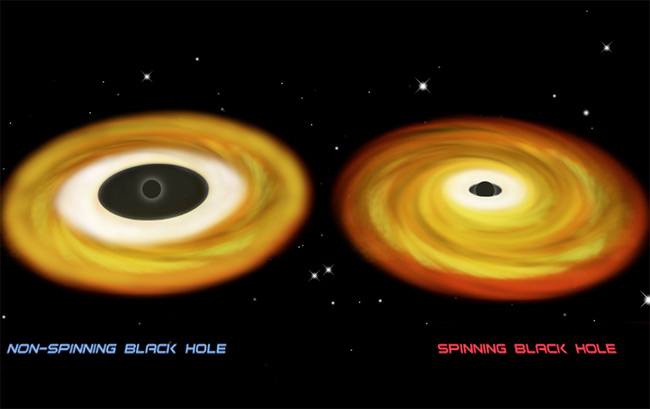
Black holes can whirl the fabric of space around themselves at extraordinary speeds. One black hole called GRS 1915+105, in the constellation Aquila (The Eagle) about 35,000 light-years from Earth, is spinning more than 950 times per second.
An item placed on the edge of the black hole's event horizon — the edge past which nothing can escape — would spin around it at a speed of more than 333 million mph (536 million kph), or about half the speed of light.
Tabletop black holes
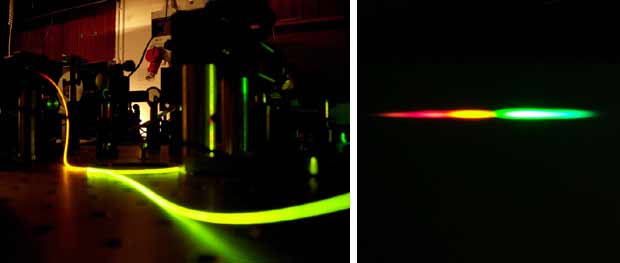
Black holes are thankfully quite far away from Earth, but this distance makes it difficult to gather clues that could help solve the many mysteries that surround them. However, researchers are now recreating the enigmatic properties of black holes on tabletops.
For instance, black holes possess gravitational pulls so powerful that nothing, including light, can escape after falling past a border known as the event horizon. Scientists have created an artificial event horizon in the lab using fiber optics. They have also recreated the so-called Hawking radiation thought to escape from black holes.
Join our Space Forums to keep talking space on the latest missions, night sky and more! And if you have a news tip, correction or comment, let us know at: community@space.com.
Get the Space.com Newsletter
Breaking space news, the latest updates on rocket launches, skywatching events and more!

Charles Q. Choi is a contributing writer for Space.com and Live Science. He covers all things human origins and astronomy as well as physics, animals and general science topics. Charles has a Master of Arts degree from the University of Missouri-Columbia, School of Journalism and a Bachelor of Arts degree from the University of South Florida. Charles has visited every continent on Earth, drinking rancid yak butter tea in Lhasa, snorkeling with sea lions in the Galapagos and even climbing an iceberg in Antarctica. Visit him at http://www.sciwriter.us
